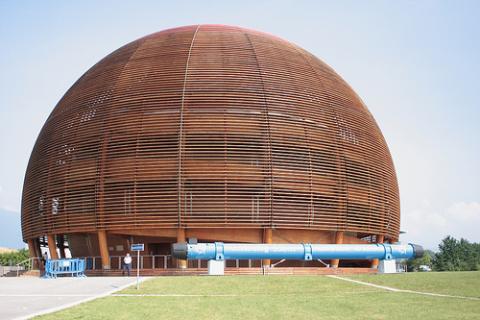Proving Einstein wrong?

The most significant point made at last night’s Irish Skeptics Society talk on the OPERA experiment at CERN is that pretty much all science journalism is bad, writes John Holden.
Science journalists have to get used to criticism. The nature of the content being reported on is often deeply complex and so is open to misinterpretation by non-scientists. Scientists will never admit to being sure of anything while journalists love their affirmatives.
The media are also often criticised for highlighting a breakthrough in science as if it has come ‘out of the blue’ when in actual fact, most breakthroughs are like “Russian dolls” that are born out of years of prior research.
Many commentators engaged in this debate will acknowledge that the media play an important part in communicating scientific discoveries to the general public. This in turn leads to the improvement of the status of the discipline and generates more funding for scientific research.
Were you to walk into this debate for the first time last night, however, you would be forgiven for believing that all science journalists - be they from scientific or non-scientific backgrounds - are bad news.
As we come to the end of Maths Week Ireland, the Irish Skeptics Society organised a talk at the Davenport Hotel which asked the question, “Faster than the speed of light – Was Einstein Wrong?” The speaker was experimental physicist Cormac O’Raifeartaigh of the Waterford Institute of Technology.
Much confusion surrounds the tentative discovery made during the OPERA experiment a month ago. For those who don’t understand it, you’re not alone but here goes: a neutrino (sub atomic particles with little or no mass) beam starting at CERN research facility in Switzerland was sent through an instrument under the Alps to the Gran Sasso facility in Northern Italy (a distance of 730km). It was observed that the neutrinos travelled at a velocity 20 parts per million above the speed of light - “nature's cosmic speed limit”; or, faster than the maximum speed predicted by Einstein’s theory of special relativity.
The OPERA experiment, as it is known, was based on the observation of over 15,000 neutrino events measured at Gran Sasso over three years and was conducted by a large group of well respected scientists. Some 160 researchers from 30 institutions and 11 countries are associated with this discovery. It should be noted that the participants didn’t set out to prove that neutrinos were faster than the speed of light. Their research was into another neutrino-related area.
Why did this new discovery capture the imaginations of us all? Because, according to
O’Raifeartaigh, the media have “a thing” about proving Einstein wrong. Hence all the interest in the OPERA Experiment. Many other theories, such as those found in quantum physics, are far more controversial but get little or no attention. There appears to be some sort of public obsession with Einstein the man, that makes his theory, E=MC2, the one to beat.
One would be forgiven for assuming that the talk was going to be solely about the recent discovery and how scientists around the world are being incredibly sceptical about the results (in fact half the members involved in the OPERA Experiment are opposed to publishing the results).
While much of it was on this topic, the speaker went to great pains to remind us all of how much negative information is left in the public domain forever on account of bad journalism. Journalists from scientific backgrounds are arrogant and will slant research discoveries to favour their own agenda, while non-scientific science journalists are open to misinterpretation and scandalising. At the end of the day, says O’Raifeartaigh, science journalism is “news driven” and very often “the role of evidence is misunderstood”.
This really was an exercise in media bashing. But as previously noted, the subject matter is so often esoteric that it’s difficult to fight back. At the very end of the talk though, one attendant got up to ask a question. The man confessed he didn’t fully understand what “mass” was (E=MC2: E is energy, M is Mass and C is the speed of light) and asked O’Raifeartaigh to explain it. There was a collective sigh of relief when O’Raifeartaigh admitted that “no-one fully understands mass”.
Image top: Wimox.
